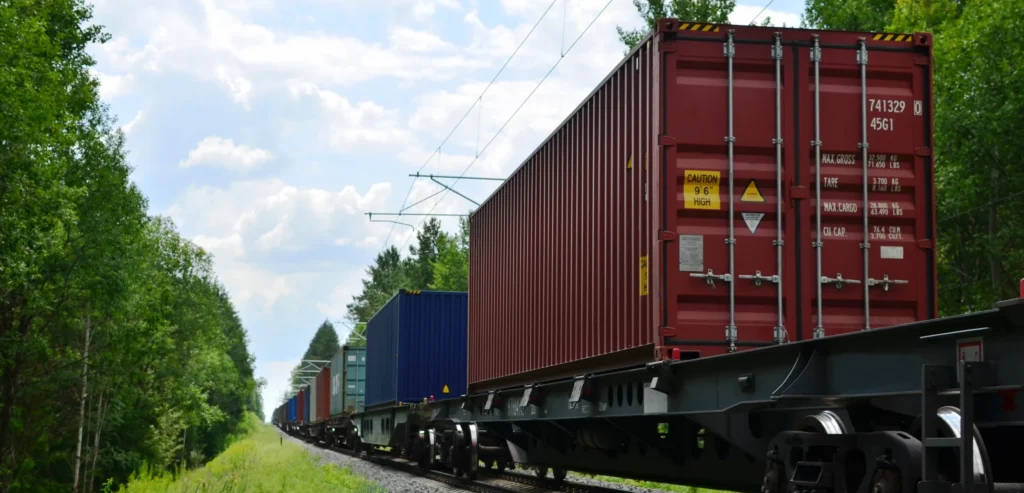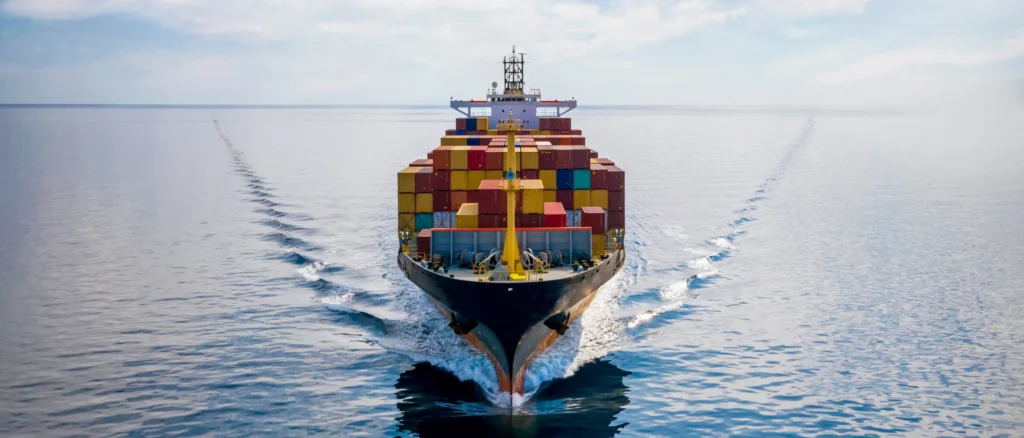Key Takeaways
- Optimized Logistics Operations: Effective multimodal transportation tracking helps optimize costs, improve transit times, and enhance customer satisfaction by providing real-time visibility across all transportation modes.
- Overcoming Common Challenges: This guide addresses the challenges faced in multimodal transportation, such as tracking inconsistencies and communication gaps, offering practical solutions and tools to ensure seamless operations.
- Leveraging Advanced Technologies: Utilize essential technologies like Transportation Management Systems (TMS), IoT devices, and real-time tracking platforms to enhance visibility, improve efficiency, and maintain a competitive edge in logistics management.
For freight brokers, carriers, and shippers, keeping track of goods across multiple modes of transportation is crucial for maintaining efficiency and ensuring customer satisfaction.
There are numerous challenges logistics professionals face in navigating the complexities of multimodal transportation. This resource guide aims to provide you with valuable insights and practical tools to enhance your tracking capabilities and streamline your operations.
Understanding Multimodal Transportation
Multimodal transportation involves the use of two or more different modes of transport—such as ground, rail, sea, and air—to move goods from origin to destination.
Each mode offers unique advantages, and combining them can optimize costs, improve transit times, and reduce environmental impact.
However, managing these varied modes and ensuring seamless transitions between them requires robust tracking solutions.
Let’s review the various forms of multimodal transportation and assess their comparative advantages.
1. Truckload/LTL – Why Choose Ground Transport??
Flexibility
Trucks and other ground transport vehicles have the unique advantage of being able to navigate through various terrains and reach destinations that other modes of transportation cannot.
This capability is particularly vital for truckload (a large quantity of goods that fills an entire truck) and LTL (consolidated shipments from multiple customers into one truck) deliveries, where goods need to be transported directly to a doorstep or a specific, often less accessible location.
This flexibility allows businesses to meet specific delivery requirements and cater to customers’ needs more effectively.
Speed
For short to medium distances, truckload shipments offers unparalleled speed and efficiency. Unlike other modes that may involve longer transit times due to transfers or logistical constraints, trucks can travel directly to the destination, minimizing delays.
This speed is crucial for ensuring quick delivery times, which is particularly important for businesses that operate on tight schedules or need to meet urgent delivery demands.
Cost-Effectiveness
Truckload is often more cost-effective compared to other modes of transport, especially for regional and local shipments.
The lower costs are due to several factors, including the direct nature of truck routes, reduced handling and transfer requirements, and the competitive pricing of road transport services.
This cost-effectiveness makes it an attractive option for businesses looking to optimize their logistics budgets without compromising on delivery quality.
Ideal for:
- Deliveries within a city or region: You will likely want to choose Truckload for urban and regional deliveries where distances are relatively short, and the infrastructure supports frequent and flexible routing.
- Perishable goods: The speed and directness of roads make shipments via truckload ideal for certain industries such as food & beverage, pharmaceuticals, consumer goods, and perishable items that require timely delivery to maintain their quality and shelf life.
- Flexible scheduling: The flexibility of ground based transportation allows for easy adjustments to your delivery schedules, accommodating last-minute changes and ensuring that goods reach their destination as needed.
2. Rail/Intermodal – Why Choose Rail Transportation Efficiency

Rail transport is highly efficient, especially when it comes to moving large volumes of goods over long distances. Trains can carry substantial amounts of cargo in a single journey, significantly reducing the cost per unit of goods transported.
This efficiency is particularly beneficial for industries that need to move bulk goods, such as raw materials, coal, and agricultural products, over extensive geographic areas.
Sustainability
Compared to road transport, rail transport is more environmentally friendly. Trains produce fewer emissions per ton-mile of freight moved, contributing to lower overall greenhouse gas emissions. Additionally, rail transport helps reduce road congestion and the associated environmental impact, making it a more sustainable option for businesses aiming to reduce their carbon footprint.
Reliability
Rail transport offers a high level of reliability, as trains are less affected by adverse weather conditions and traffic delays compared to road transport. Rail networks operate on fixed schedules and dedicated tracks, ensuring consistent and predictable delivery times. This reliability is crucial for supply chain planning and meeting delivery commitments.
Intermodal
Intermodal transportation involves the seamless integration of multiple modes of transport, including rail, truck, and sometimes sea, to move goods efficiently from origin to destination. The combination of rail and truck transport can help you leverage the strengths of both modes, providing flexibility and cost-effectiveness. Containers can be easily transferred between trucks and trains, reducing handling times and minimizing the risk of damage. Intermodal solutions also benefit from the reliability and efficiency of rail for long hauls, while trucks handle the initial pickup and final delivery, ensuring door-to-door service.
Ideal for:
- Bulk goods: Rail transport is particularly suited for the movement of bulk commodities, such as minerals, chemicals, and grains, which require efficient and cost-effective shipping solutions.
- Long-distance shipping: For long-distance transportation, rail is a preferred mode due to its ability to move large quantities of goods over extended distances at lower costs.
- Heavy or oversized cargo: Rail transport can accommodate heavy and oversized cargo that might be challenging or expensive to move by road. The robust infrastructure of railways supports the safe and efficient transport of such loads.
3. Air Shipments – Why Choose Air Transportation?
Speed
Air transport is the fastest mode of transportation, especially for long distances. This speed is crucial for time-sensitive deliveries where rapid delivery times are essential. Businesses that need to meet tight deadlines, such as those in the medical, technology, and fashion industries, benefit significantly from the quick transit times that air transport provides.
Global Reach
Air transport offers unparalleled access to international markets through an extensive network of airports worldwide. This global reach enables businesses to expand their operations and serve customers across different continents efficiently. Air transport facilitates international trade and allows for the swift movement of goods between countries, supporting global commerce and supply chain integration.
Security
Air transport is known for its high levels of security, making it an ideal choice for transporting valuable or fragile items. Airports and airlines implement stringent security measures to protect cargo from theft, damage, and other risks. This security is vital for businesses that need to ship high-value goods, such as electronics, jewelry, and pharmaceuticals, ensuring that their products arrive safely and intact.
Ideal for:
- High-value goods: Air transport is perfect for transporting high-value items that require secure handling and quick delivery to minimize the risk of loss or damage.
- Urgent deliveries: For shipments that need to reach their destination rapidly, air transport is the best option, providing the fastest transit times compared to other modes of transportation.
- International shipments: Air transport is essential for international shipping, offering efficient and reliable services to connect businesses with markets around the world.
4. Sea Cargo – Why Choose Sea Transport?

Cost-Efficiency
Sea transport is the most economical option for transporting large volumes of goods internationally. The ability to move vast quantities of cargo in a single voyage significantly reduces the cost per unit of goods shipped. This cost-efficiency is particularly beneficial for businesses engaged in international trade, allowing them to optimize their logistics budgets and maintain competitive pricing.
Capacity
Sea transport can handle oversized and heavy cargo that other modes of transportation cannot. Ships are designed to carry large and heavy items, including machinery, vehicles, and construction materials, making sea transport ideal for industries with substantial cargo needs. This capacity allows for the efficient and safe transportation of goods that would be challenging to move by air or land.
Variety
Sea transport is suitable for a wide range of goods, from raw materials like coal, oil, and agricultural products to finished products such as electronics, clothing, and consumer goods. The versatility of sea transport makes it a vital component of global supply chains, catering to diverse industries and their varying transportation requirements.
Ideal for:
- International trade: Sea transport is essential for global commerce, providing an economical and reliable means of moving goods between countries and continents.
- Bulk commodities: For shipping large quantities of bulk commodities, such as minerals, grains, and liquids, sea transport offers the necessary capacity and efficiency.
- Non-urgent shipments: Sea transport is suitable for shipments that are not time-sensitive, allowing businesses to benefit from lower transportation costs without compromising on delivery quality.
Common Challenges and How a RTTVP Can Help
While multimodal transport can optimize shipping routes and reduce your costs, it also presents unique challenges in tracking shipments. Here are the most common challenges faced by businesses when it comes to multimodal transport, along with practical solutions to address them.
1. Inability To Track Shipments
Challenge: Customers often struggle with shipment tracking across different modes of transport. When a shipment moves from a truck to a ship or from a train to a truck, tracking information can become fragmented or delayed.
Solution: Implementing a Real-Time Transport Visibility Platform (RTTVP) that integrates data from all carriers and modes can provide a unified view of your shipment’s status. Ensure your RTTVP supports real-time updates and notifications to keep customers informed at every stage. This will allow your customers to track their shipments seamlessly, providing peace of mind and enhancing their overall experience.
2. Inconsistent Data
Challenge: Different carriers and transportation modes use various data formats and tracking systems. This inconsistency can lead to data integration issues, making it hard for customers to get a coherent tracking update.
Solution: Use a TMS or visibility platform that can standardize and consolidate data from different sources. By converting disparate data into a consistent format, you can provide a seamless tracking experience for your customers.
3. Delays in Data Transmission
Challenge: Information delays are common in multimodal transportation. For instance, delays in updating the system after a shipment has been transferred from a ship to a truck can lead to uncertainties and confusion.
Solution: Collaborate with carriers to improve the timeliness of data transmission. Automate data sharing processes and use electronic data interchange (EDI) to ensure prompt updates.
4. Communication Between Parties
Challenge: With multiple parties involved in multimodal transport, communication gaps can occur. These gaps can lead to miscommunication, lost shipments, or delayed deliveries, frustrating customers.
Solution: Establish clear communication protocols and utilize your Real-Time Transport Visibility Platform (RTTVP) as a centralized communication hub. Ensure the RTTVP regularly updates customers and stakeholders about the shipment status and any potential issues. This proactive approach keeps everyone informed, reduces uncertainty, and enhances the overall customer experience.
5. Handling Unexpected Delays
Challenge: Multimodal transport is susceptible to various delays, such as port congestion, customs clearance issues, or adverse weather conditions. These delays can disrupt the entire supply chain, affecting delivery timelines.
Solution: Provide customers with proactive updates and contingency plans. Use predictive analytics to anticipate potential delays and offer alternative solutions to minimize the impact.
6. Difficulty in Monitoring Environmental Conditions
Challenge: For sensitive goods that require specific environmental conditions (e.g., temperature-controlled shipments), monitoring becomes challenging when switching between transportation modes.
Solution: Use IoT devices and sensors to continuously monitor environmental conditions. Ensure that these devices are compatible across all modes of transport and provide real-time alerts for any deviations.
7. Compliance with Regulations
Challenge: Each mode of transport may have different regulatory requirements, and keeping track of compliance can be daunting. Non-compliance can result in fines, delays, and damaged customer relationships.
Solution: Stay updated on regulatory changes and ensure your platform includes compliance management features. Educate your customers about these requirements and how you manage compliance to avoid disruptions.
How You’ll Benefit From Effective Multimodal Tracking
For shippers seeking to enhance their logistics operations, effective multimodal tracking offers a range of significant advantages. By focusing on the needs and expectations of your customers, these benefits can help you streamline processes, reduce costs, and deliver superior service.
Here are the key benefits you can expect:
- Enhanced Visibility: Tracking multimodal shipments provides comprehensive visibility into the location and status of shipments at all stages of the journey. This transparency allows for proactive decision-making and swift resolution of any issues that arise.
- Improved Efficiency: By integrating tracking systems across all transportation modes, logistics providers can synchronize operations, minimize delays, and optimize route planning, leading to faster and more reliable deliveries.
- Cost Savings: Effective tracking helps identify inefficiencies and bottlenecks in the supply chain, enabling businesses to implement cost-saving measures and negotiate better rates with carriers.
- Customer Satisfaction: Reliable tracking information allows businesses to provide accurate delivery updates to customers, enhancing trust and satisfaction. This is particularly important in industries where timely delivery is critical.
Essential Tech You Can Leverage

There are also numerous tools which can effectively track multimodal transport and aid organizations combat challenges as well as mitigate risk.
However, leveraging the right tools and technologies is essential. Here are some key resources to consider:
1. Transportation Management Systems (TMS)
A robust TMS can integrate data from various carriers and transportation modes, providing a centralized platform for tracking and managing shipments. Descartes offers comprehensive TMS solutions for shippers, freight brokers and 3PLs that supports multimodal tracking, helping you gain full visibility over your supply chain.
2. ELD, IoT & GPS Devices (Telematics)
ELD and IoT devices attached to shipments or vehicles offer real-time location tracking and condition monitoring. These devices can provide crucial data via APIs on factors like location, temperature, humidity, and handling, ensuring that sensitive goods are transported safely.
3. Mobile App Solutions
Mobile apps enhance the accessibility and efficiency of tracking shipments on the go. For example, the MacroPoint for Truckers app, a highly rated and widely downloaded freight tracking app, simplifies providing customers with real-time visibility without the need for constant check calls.
4. App-Less Text Tracking
App-less text tracking provides an alternative to traditional mobile apps for tracking. Drivers receive a text message to report their location via a web browser instead of downloading an app. By clicking a link, drivers can automatically send updated location data to customers via MacroPoint. This method is particularly useful when carriers lack connectivity options other than the driver’s cell phone or when drivers are unwilling or unable to download the MacroPoint app. This ensures automated and electronically verified location updates, enhancing customer visibility and tracking efficiency.
Best Practices for Multimodal Tracking
To maximize the use of technology for multimodal transportation tracking, consider implementing the following best practices:
1. Standardize Data Collection
Ensure that data from all transportation modes and carriers is collected in a standardized format. This facilitates easier integration and analysis, providing a clearer picture of your logistics operations.
2. Maintain Strong Relationships
Building strong relationships within the supply chain is crucial for reliable tracking. Regular communication and collaboration with others (carriers, 3PL’s, etc.) can help ensure timely and accurate updates on shipment status.
3. Leverage Real-time Alerts
Set up real-time alerts for key events, such as delays, route deviations, or condition breaches. These alerts enable you to respond quickly and take corrective actions to minimize impact on delivery schedules.
4. Continuously Improve Processes
Regularly review and analyze tracking data to identify areas for improvement. Implementing a culture of continuous improvement helps keep your logistics operations efficient and responsive to changing demands.
Final Thoughts
Investing in robust multimodal transportation tracking solutions is crucial for the long-term success of your logistics operations. It enables proactive management of supply chain disruptions, enhances customer satisfaction, and provides a competitive edge in the market.
However, to fully reap these benefits, it is essential to select a platform that meets the unique demands of your business, including integration capabilities, scalability, user experience, and support.
For those considering a comprehensive and reliable tracking solution, Descartes MacroPoint offers an advanced platform designed to meet the diverse needs of modern supply chains. With our extensive carrier network, cutting-edge analytics, and intuitive interface, Descartes MacroPoint can help transform your logistical operations.
Speak with a member of our team today to get started and demo the platform.

